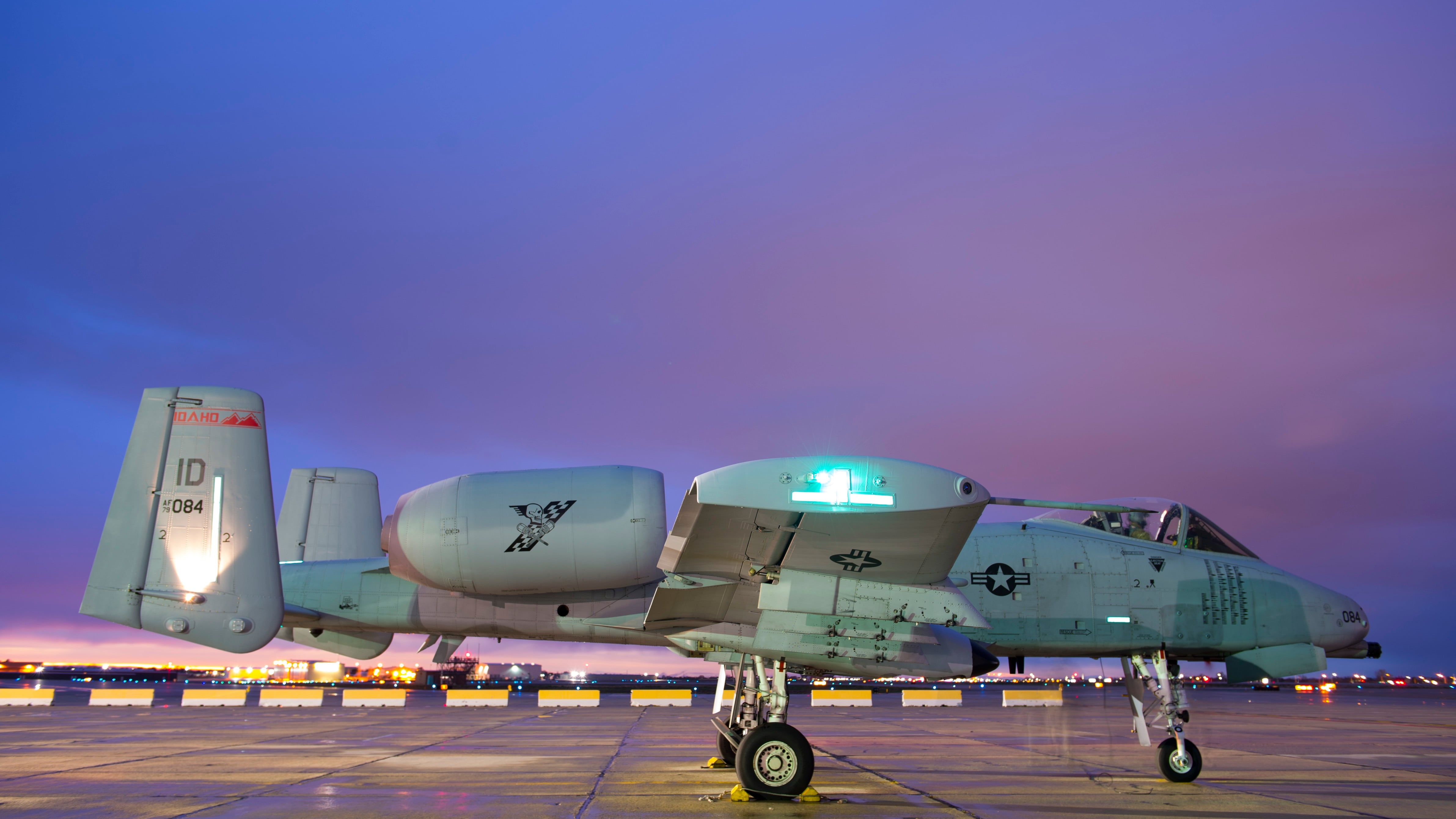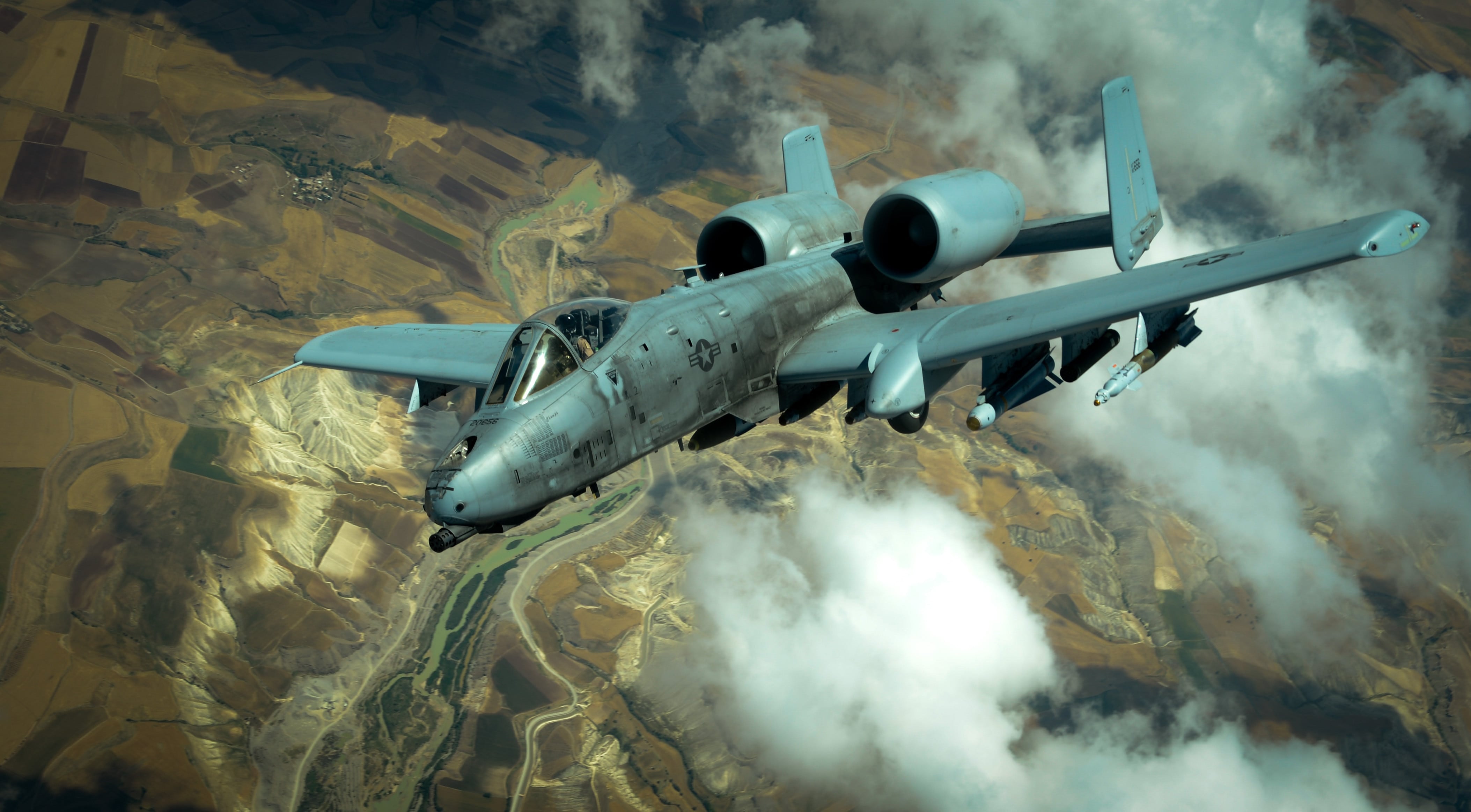NATIONAL HARBOR, Md. — The Air Force may be forced to ground a portion of its A-10 Warthog squadrons as early as fiscal year 2018, as their wings age out before replacements can be provided, the head of Air Force Materiel Command said Wednesday.
Although the service plans to keep the majority of its A-10 fleet into the forseable future, leaders have acknowledged that it will be forced to retire three Warthog squadrons unless it is given money for new wings. Currently, 109 out of 281 A-10s need their wings replaced to extend their lives to 16,000 flight hours.
But even if Congress funds the additional wingsets, the Air Force will not be able to hold a competition, award a contract and modify its A-10s with new wings before the service life of at least some of the the old wings runs out, said Gen. Ellen Pawlikowski, commander of Air Force Materiel Command.
That could leave at least 55 aircraft grounded by fiscal year 2025, according to AFMC projections.
“We’re trying to work through to see if we can get to the point where we will not have to ground airplanes waiting to get wings, but as it stands right now, we will have to ground airplanes while we work through getting additional wings,” she said during an exclusive interview with Defense News at the Air Force Association’s annual conference.
RELATED

As a stopgap measure, AFMC is considering harvesting wings from A-10s mothballed in the boneyards of Davis-Monthan Air Force Base in Arizona, refurbishing them and fitting them on Warthogs as their wings age out. But that “gives us a few more hours, not as many as new wings do,” Pawlikowski said, acknowledging that the situation was far from optimal.
Pawlikowski stated that, to her memory, some A-10s could stop flying as early as 2019. However, Air Material Command later clarified that “our current grounding projections show first groundings in FY18 with approximately 55 aircraft by FY25.“
Even some of the A-10s slated to get new wings could get grounded, as Boeing struggles to deliver wingsets on time due to an issue with a part needing to be reworked, Pawlikowski said.
“What we will do, is we will have to manage the fleet in order to provide sufficient jets, particularly for the squadrons that are deploying in support to operations. But aircraft availability will be impacted due to the fact that we will not have sufficient wings to maintain the current aircraft availability,” she said.
“So we’ll just have to be sharper with where jets go and how we manage the mission in terms of the deployments to keep the squadrons whole.”
In a statement to Defense News, Boeing acknowledged that it is experiencing difficulties keeping pace with the A-10 wing delivery schedule.
“We have experienced a delay on a composite part built by one of our suppliers that is used to construct the outer wing panels on the A-10 Thunderbolt II,” a Boeing spokeswoman said. “We have assessed the issue and we continue to work closely with the U.S. Air Force and our supplier for a responsive and expedited resolution. To date, Boeing has delivered 159 of 173 A-10 wing sets.”
Defense News broke the news in June that the Air Force could cut as many as three A-10 squadrons unless funding emerged for new wings. Gen. Mike Holmes, head of Air Combat Command, said then that the first A-10s could be retired within five years if new wingsets were not procured.
The congressional armed services committees have included a $103 million authorization in their policy bills that would allow the service to restart production of A-10 wings and manufacture four wing sets, and that measure was then approved by the House and Senate. However, that legislation does not actually allocate funding, and Congress will have to pass a spending bill before the Air Force can move forward with buying new wingsets.
RELATED

Lawmakers have blocked the service’s attempts to retire the A-10 in the past, including plans in the Air Force’s fiscal year 2017 budget that would incrementally phase out the aircraft starting in FY2018 and a FY2016 proposal to mothball all of its A-10s that year.
But Pawlikowski pointed the finger at Congress as one of the key reasons why A-10s may be stuck on the flight line in a matter of years, saying this was the natural consequence of a decade of continuing resolutions and budget instability that left the Air Force unable to make longterm plans.
“Our opportunity to go get moving on that competition to award a new contract to get those additional wings is delayed until we can get an actual appropriation,” she said. “I can’t do that work under a continuing resolution.”
Updated on 9/20/17 at 2:30 p.m. EST with comment from Boeing and clarification from Air Materiel Command. Updated again on 9/21/17 at 6:00 p.m. EST with revised projections from AFMC on the timeline for A-10 groundings.
Valerie Insinna is Defense News' air warfare reporter. She previously worked the Navy/congressional beats for Defense Daily, which followed almost three years as a staff writer for National Defense Magazine. Prior to that, she worked as an editorial assistant for the Tokyo Shimbun’s Washington bureau.





